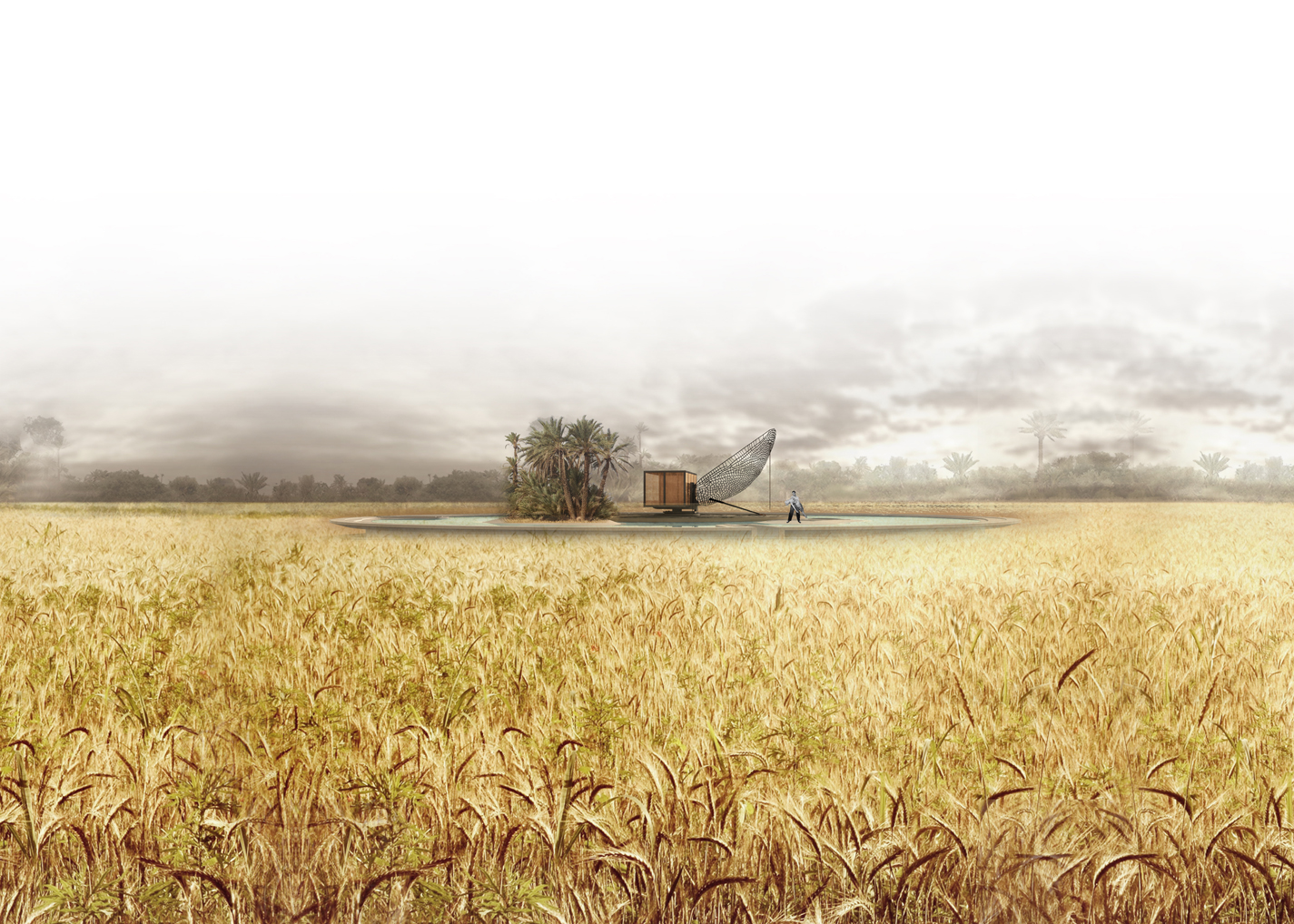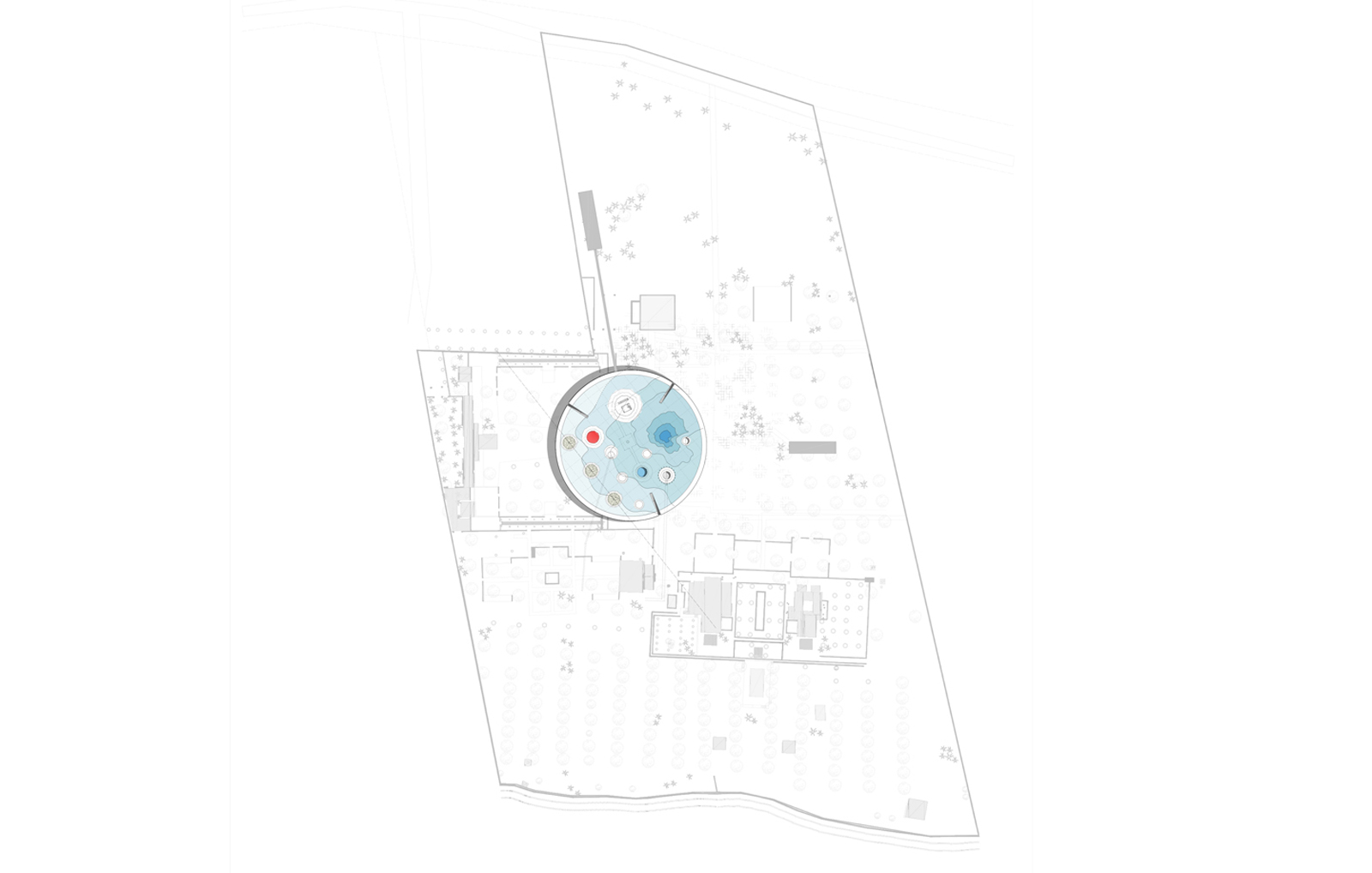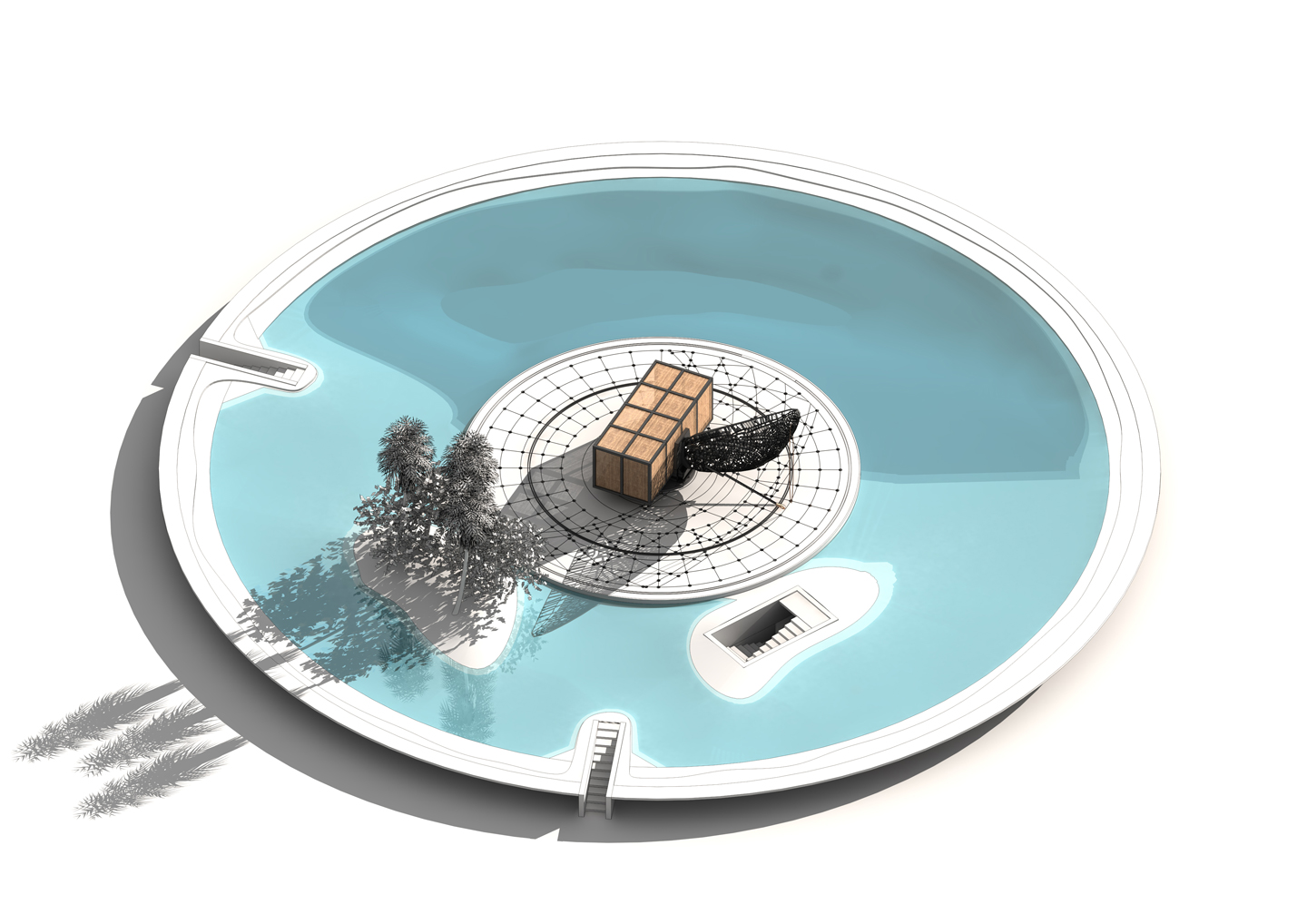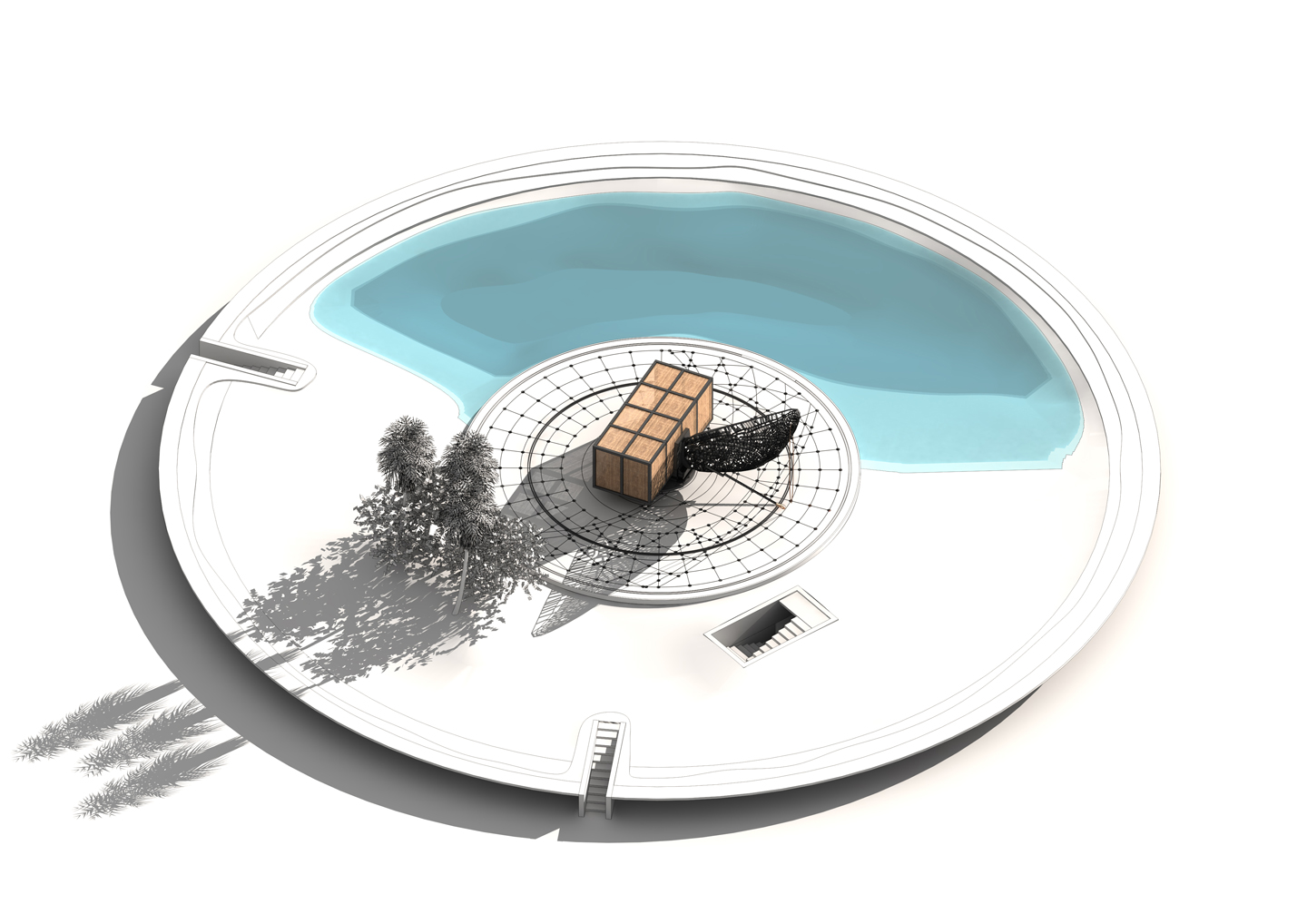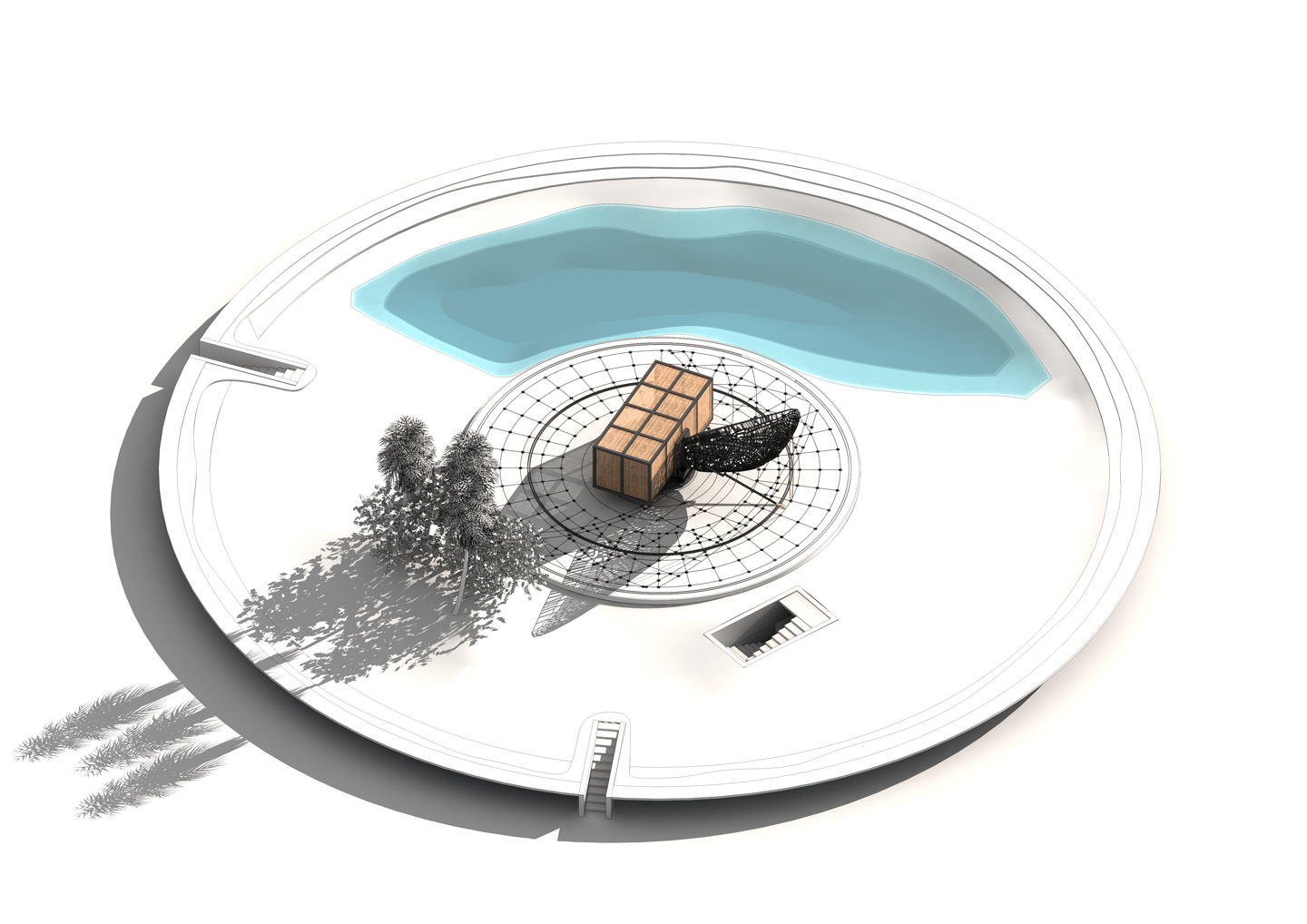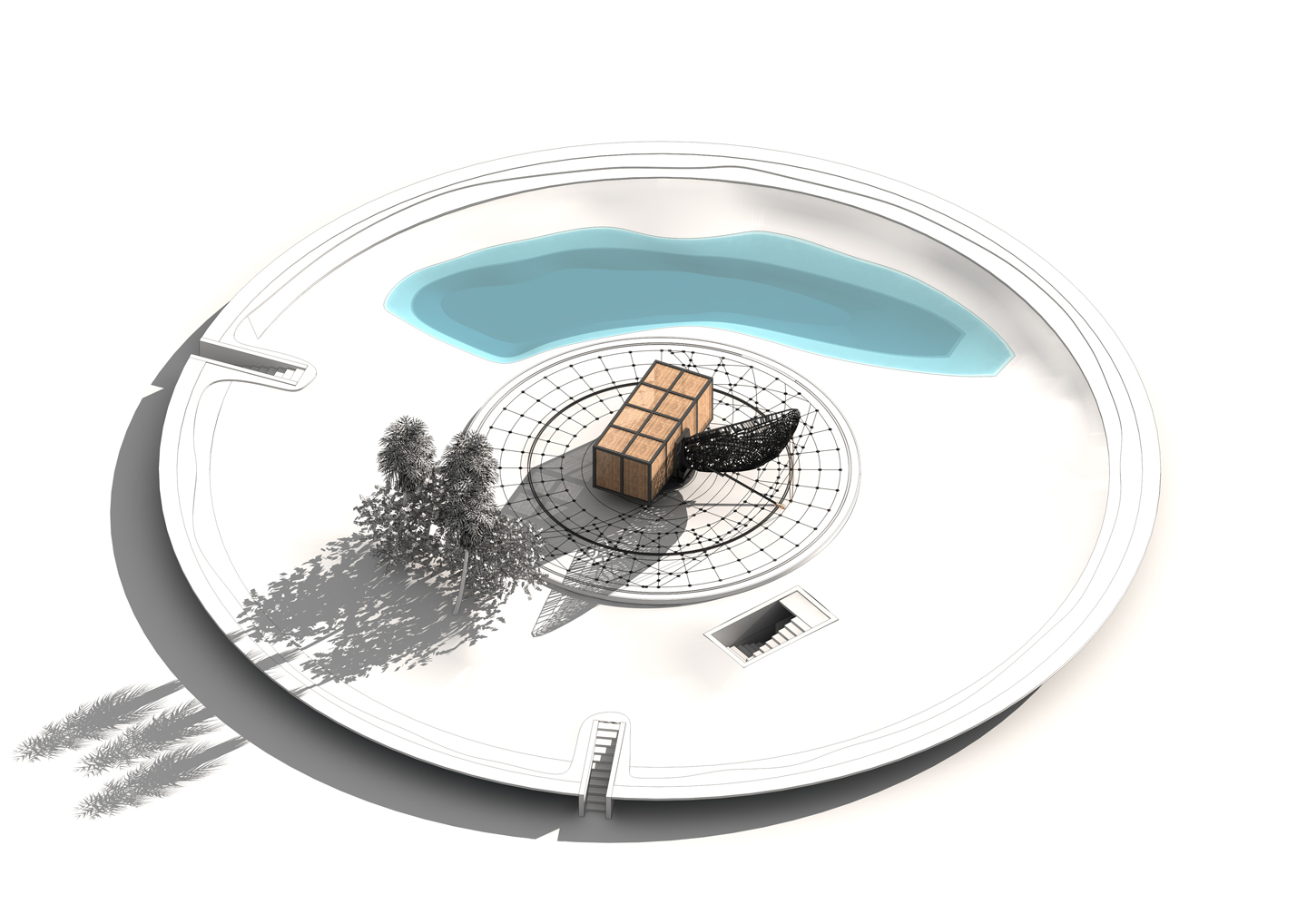
The Ennakhla project is located in Ennakhla, a western area of Marrakesh in Morocco. With a surface area of seven hectares, the site is largely comprised of agricultural land, on which wheat, olive trees, palm trees and citrus trees are cultivated. The plot houses very few edifices relative to its vast area, including the inhabitable structures of relatively modest scale, comprising a structure housing two connected suites, another accommodating a kitchen, as well as the frames of an unfinished guest house, hammam. The rest of the site’s built mass consists of various elements strewn across the land, such as three water wells, water reservoirs, pergolas, guards’ quarters and storage volumes. The client approached us with a broad agenda – one could even say with practically no agenda at all. Our suggested proposal consists of a thin disk of 65 meters in diameter, seemingly hovering 1.6 meters over a wheat field at the center of which it is located. Treated in rough white concrete, the surface of the disk is covered in craters of varying sizes, accommodating various activities. These include a banquet space with a circular dining table served from its center, where service personnel communicate directly with the kitchen underground, a fire pit, areas to take in the sun, as well as openings overlooking what takes place beneath the surface. With three water wells located on the site, irrigating it at a rate of 150 cubic meters per day, that same water will be used to submerge the disk. Depending on aspects such as the weather or time of day, sections of the surface will be dampened, soaked or exposed, craters flooded or emptied; injecting the aforementioned happenings with much-needed moisture in such arid climate. Acting as more than just an edifice, this installation amidst the garden explores the interaction between the surface of the disk, and the entrails of the earth below it, where a hammam is sunken into the ground. The water used on the surface of the disk is pumped from the site’s three wells, continually overflowing to continue irrigating the surrounding land, creating a constant circuit of water for simultaneous agricultural and personal use. Water is thus never stagnant, perpetually renewed and refreshed, eliminating the need for any added chemicals.






